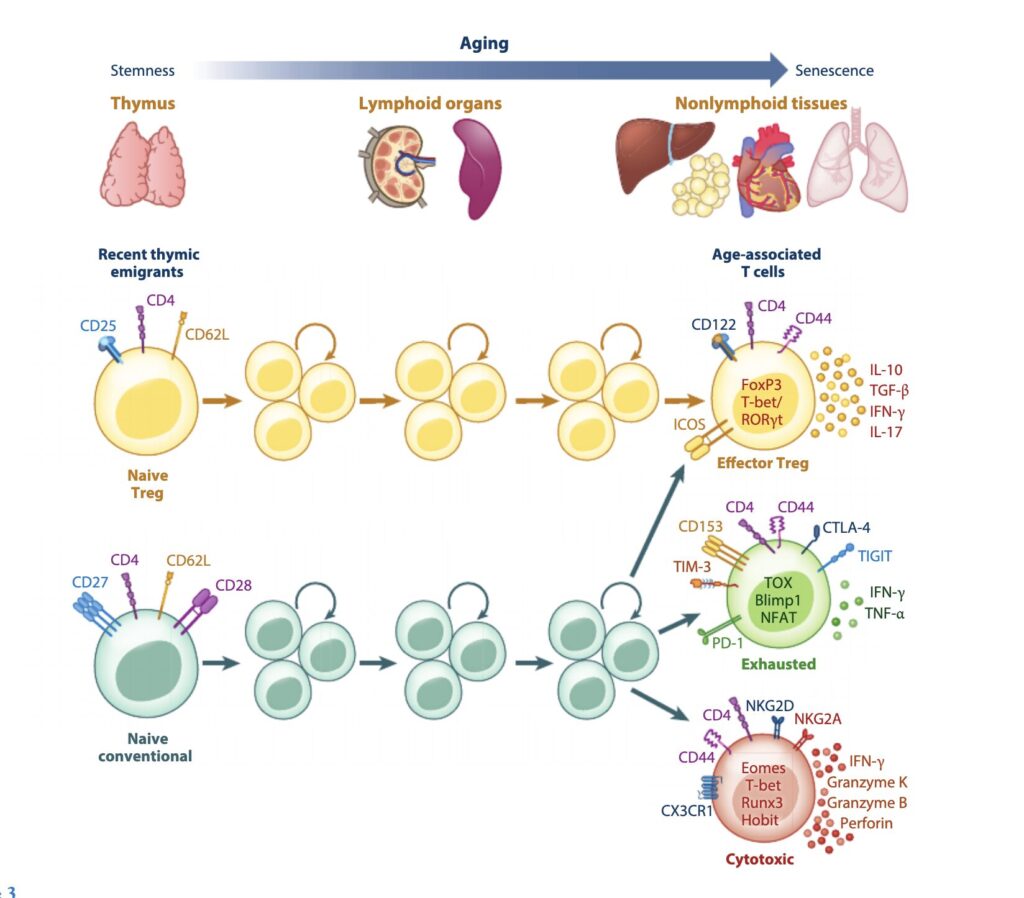There is a dramatic remodeling of the T cell compartment during aging. The most notorious changes are the reduction of the naive T cell pool and the accumulation of memory-like T cells. Memory-like T cells in older people acquire a phenotype of terminally differentiated cells, lose the expression of costimulatory molecules, and acquire properties of senescent cells. In this review, we focus on the different subsets of age-associated T cells that accumulate during aging. These subsets include extremely cytotoxic T cells with natural killer properties, exhausted T cells with altered cytokine production, and regulatory T cells that gain proinflammatory features. Importantly, all of these subsets lose their lymph node homing capacity and migrate preferentially to nonlymphoid tissues, where they contribute to tissue deterioration and inflammaging.
